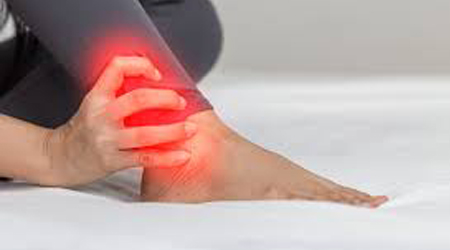Ankle Joint

The Ankle joint, additionally referred to as the Talocrural Articulation, may be a secretion hinge joint connecting the distal ends of the leg bone and leg bone within the lower limb with the proximal end of the talus. The articulatio talocruralis is maintained by the form of the talus and its tight work between the leg bone and leg bone. In the neutral position, there are strong bony constraints. With increasing plantar flexion, the bony constraints are decreased and the ligaments are more susceptible to strain and injury. The articulation between the tibia and the talus bears more weight than that between the smaller fibula and the talus.
Articulating Surfaces
Trochlea of Talus Malleolar Mortis formed by Tibia & Fibula Lateral & Medial Malleolus
Ligaments
Lateral Ligaments of Ankle: Reinforce Joint Laterally through three ligaments.These ligaments stabilize the ankle joint, and function a guide to direct ankle joint motion by attaching the lateral malleolus to the bones below the gliding joint.They are answerable for resistance against inversion and internal rotation stress. Medial Ligaments of Ankle: Known Collectively as the Deltoid Ligament the medial ligaments of the articulatio plana attaches proximally to the Medial Malleolus and spread to connect distally to the Talus, Calcaneus and Navicular via four adjacent and continuous parts. The deltoid ligament is triangular in form and consists of a superficial and deep layer that connect the talus to the medial malleolus. It reinforces the joint capsule medially. Stabilise’s the articulatio talocruralis throughout eversion of the foot and prevents luxation of the articulatio talocruralis